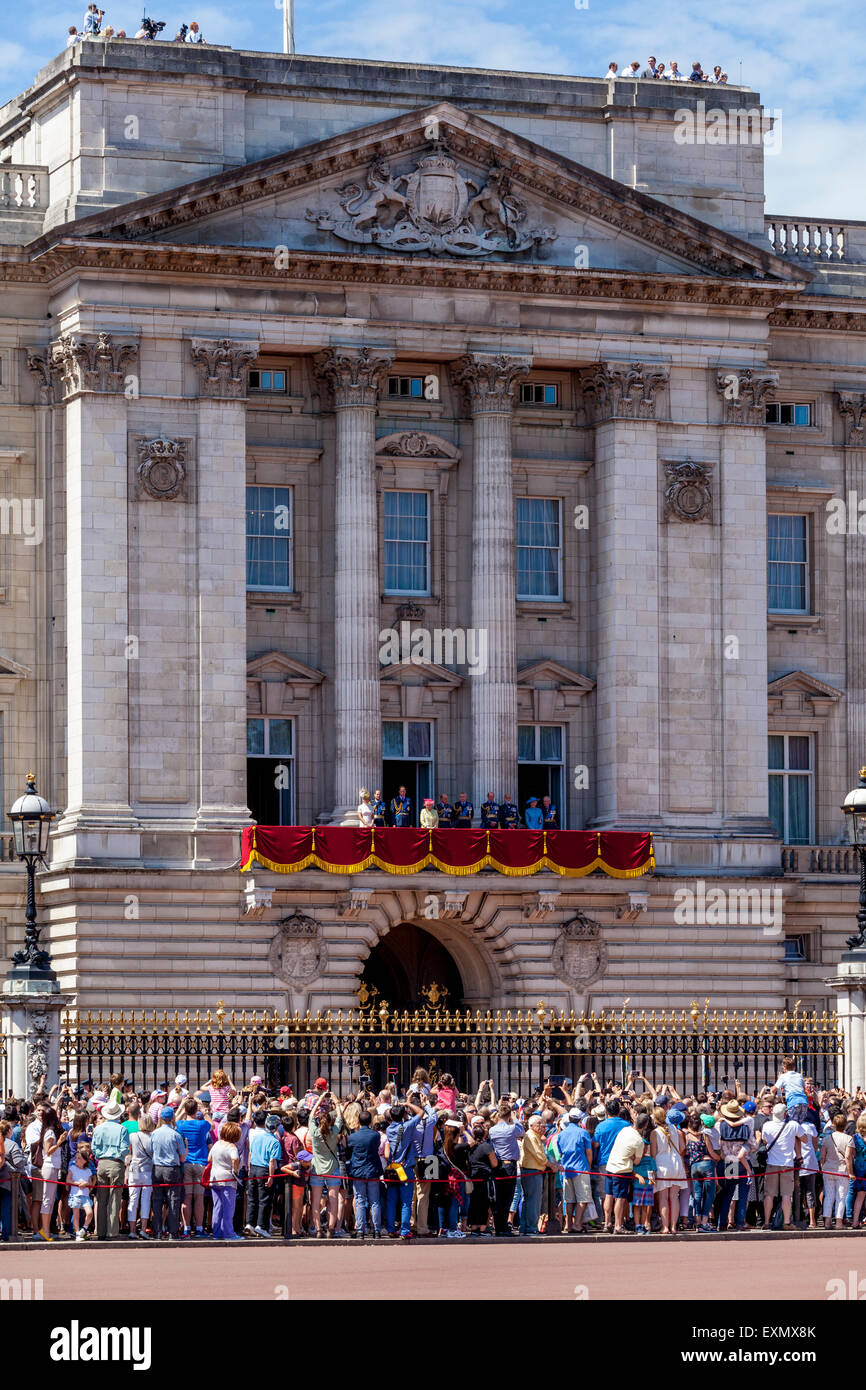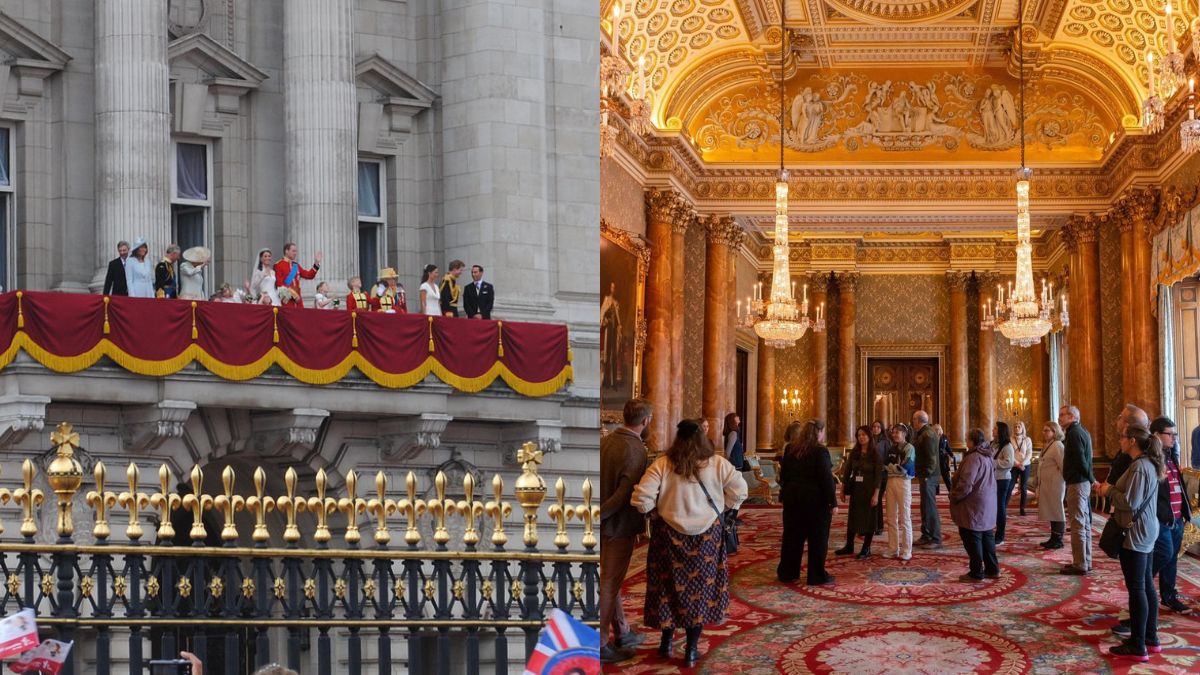Catherine’s Bold Gamble: How Lady Louise Became the Princess of Wales’s Most Unlikely Ally

When Catherine’s voice carried through the gilded halls of Windsor, the chamber seemed to pause. Courtiers who had grown accustomed to protocol and predictability found themselves blindsided by a single, deliberate sentence. The Princess of Wales, serene but unyielding, named Lady Louise Windsor — the shy, overlooked granddaughter of the late Queen — as her chief adviser.
The words landed like thunder. Gasps rippled across the room, some sharp with disapproval, others hushed with disbelief. To Catherine’s critics, it was a reckless break with tradition. To her supporters, it was the clearest signal yet: she was no longer content to follow the script. She was rewriting it.
The Shock at Windsor
“Chief adviser” was no ceremonial flourish. It meant proximity to power, a hand on the levers that shape the monarchy’s direction. For decades, such a seat was reserved for seasoned courtiers, veterans of palace intrigue who understood how to guard tradition at all costs. Catherine’s move bypassed them all.
Even King Charles, insiders whispered, was caught off guard. His reaction was a thin smile that concealed surprise — and perhaps unease. Within Camilla’s circle, the reaction was colder still. To them, Lady Louise’s elevation was nothing short of provocation, a direct challenge to the influence they had worked so carefully to secure.
Why Lady Louise?
To the public, Lady Louise had always seemed peripheral: studious, modest, rarely quoted in the press. But Catherine had watched her closely for years.
The bond between them had been forged in grief. In the solemn days after Queen Elizabeth’s death, Catherine noticed Louise’s composure. While others faltered under the strain of loss and ceremony, Louise stood steady, eyes clear, presence calm. She seemed to carry instinctive dignity, the kind that cannot be taught.
Later, during a tense exchange with Camilla’s allies, Louise’s quiet intervention had redirected the conversation with understated courage. Catherine did not forget. In Balmoral walks and private conversations, she tested the young royal with hypothetical dilemmas and subtle political puzzles. Louise responded with clarity and precision, demonstrating not only intelligence but an uncanny ability to read motives, detect threats, and weigh consequences.
For Catherine, who had grown wary of palace machinery, this was invaluable. Lady Louise was not bound by ambition or the whispers of old courtiers. She was loyal, discreet, and razor-sharp.
The Enemy Within
The announcement unleashed fury behind closed doors. Senior courtiers muttered about “inexperience” in memos dripping with condescension. Yet beneath the surface, fear was the true emotion. Fear that their hierarchy had been disrupted, that Catherine was consolidating power outside their control.
Camilla’s displeasure was thinly veiled. At a luncheon the next day, her clipped tone betrayed her anger. To her circle, Louise’s appointment was more than a breach of etiquette. It was a statement that Catherine’s reign, when it came, would not be shaped in the Queen Consort’s shadow.
Charles tried to steady the narrative with a neutral statement praising Louise’s “dedication,” but the ambiguity fooled no one. Within Windsor’s walls, a quiet war had begun.
Trial by Fire
Barely days into her role, Louise faced her first test. A leak distorted Catherine’s private remarks about an upcoming state visit, twisting them into an apparent slight against a key ally. Headlines questioned whether the Princess of Wales was dismissive — and whether her new adviser had failed her.
Louise moved quickly, not with spectacle but with silence. Listening carefully, she traced the leak to a senior figure with ties to Camilla’s camp. Instead of confrontation, she chose precision: a private meeting that left the culprit shaken and the sabotage quietly neutralized. By the next morning, clarifications appeared in the press, the storm evaporating before it could take hold.
It was a subtle victory, but a decisive one. Skeptics who had dismissed Louise as a sentimental choice now saw her as a strategist capable of defending the monarchy’s future without fanfare. Catherine’s instincts had been vindicated.
A Partnership on Display
If Windsor was the crucible, the charity gala was the coronation. Before a glittering audience of diplomats and dignitaries, Catherine rose to speak. She credited her new adviser not in vague platitudes but with specific, hard-won achievements. And when the cameras panned, Louise sat at her side — not at the margins, but at the center.
Across the room, Camilla’s stiffened smile told its own story. By the next morning, public opinion polls showed overwhelming support for Catherine’s boldness. To many, Lady Louise represented a refreshing break from the stale hierarchies of the past. Together, the two women embodied both tradition and change.
The Balcony Declaration
The defining moment came on the steps of Buckingham Palace. Before a sea of flags and cheers, Catherine named Lady Louise “the guardian of my reign.” The symbolism was unmistakable: Catherine’s trust was absolute, her alliance unshakable.
When she placed a historic insignia in Louise’s hands, the gesture resonated beyond ceremony. It was a seal of partnership, a warning to doubters, and a promise to the nation. William’s nod of approval beside them confirmed what everyone already sensed: this was the future of the monarchy, visible in plain sight.
The image of Catherine and Louise standing together dominated front pages worldwide. For some, it was a provocation. For others, it was the beginning of a new royal era. But for all, it was unforgettable.
The Most Formidable Partnership
Camilla’s retreat from key engagements soon followed, her silence as telling as any statement. The old guard muttered, but the tide had turned.
Catherine and Lady Louise, once separated by age, status, and expectation, had become the most formidable partnership Windsor had ever seen. Not bound by ceremony, but by loyalty, strategy, and the unyielding resolve to protect the crown’s future.
The monarchy had changed that day. And though the battles were far from over, Catherine had made her choice clear: the next chapter would be written on her terms — and Lady Louise would hold the pen beside her.



